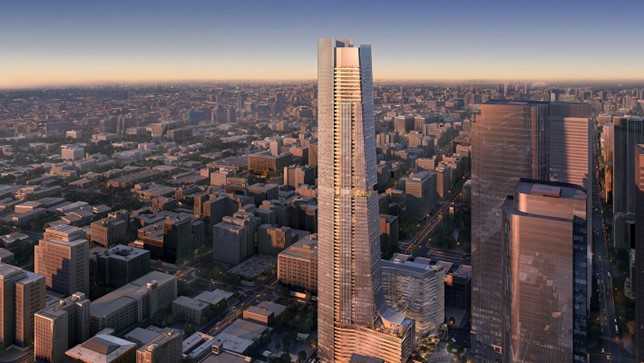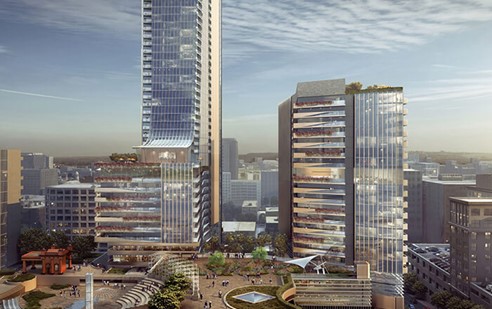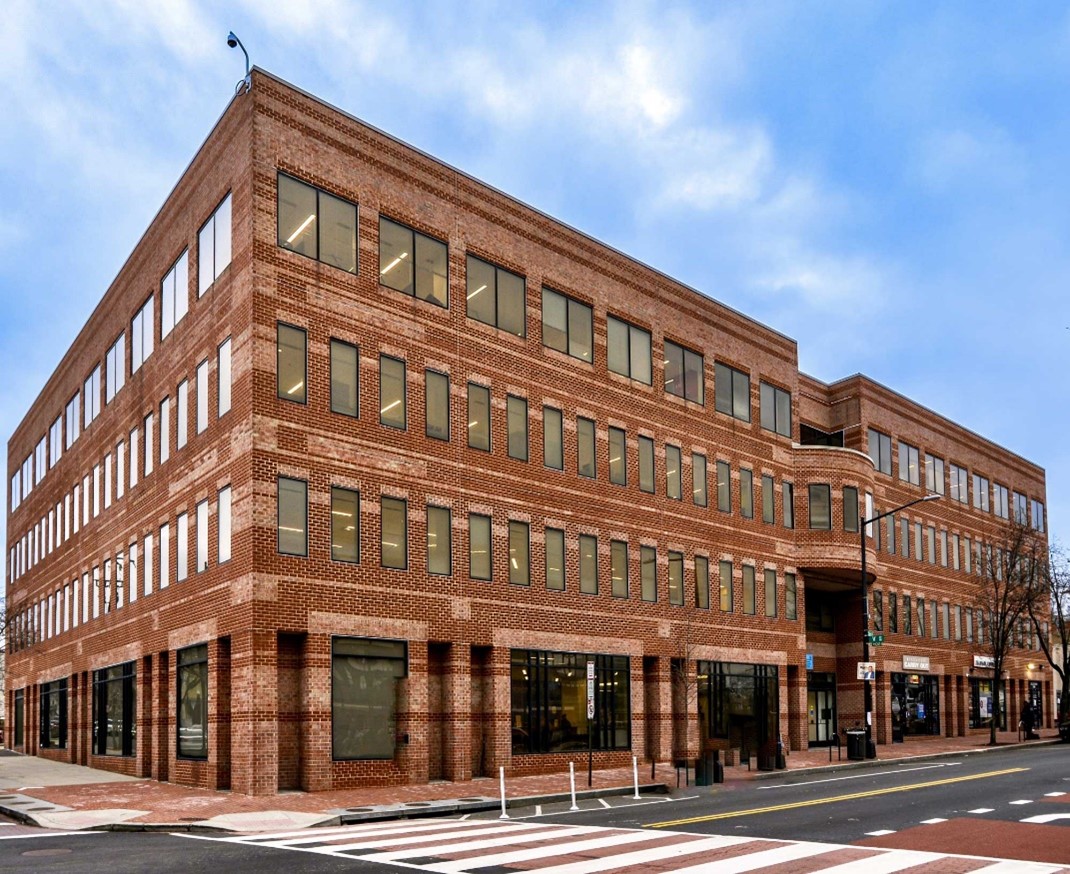With persistence and the right approach, you can successfully navigate even the most competitive urban markets.
We explore the factors driving Boston’s luxury real estate market, the types of properties that define it, and the neighborhoods that have become synonymous with luxury living.

In the dynamic realm of real estate development, a growing emphasis on affirmative approaches is reshaping the way commercial spaces are conceived. This blog explores the vital intersection of affirmative real estate and local culture, shedding light on how real estate development companies' thoughtful development strategies can preserve and celebrate communities' unique identity within commercial landscapes.
Understanding the essence of affirmative real estate is crucial for appreciating its impact on cultural preservation. Unlike conventional development practices, affirmative approaches actively seek to embrace diversity and celebrate the distinct identity that each community contributes to its surroundings. This shift represents a departure from generic, one-size-fits-all approaches, recognizing the importance of cultural preservation in fostering vibrant, authentic commercial spaces.
Local identity forms the cultural tapestry of communities, shaping their character and providing a sense of belonging. Acknowledging and celebrating this identity within commercial developments becomes pivotal in ensuring that the soul of a community is not overshadowed or erased by the modernization of urban spaces. The interplay between the historical and the contemporary, the traditional and the modern, becomes a delicate dance in which local culture takes center stage.
Global case studies offer inspiring examples of affirmative real estate projects successfully integrating and celebrating local culture within commercial developments. These projects go beyond surface-level aesthetics, actively engaging with the architectural design to incorporate elements that reflect and honor a community’s unique heritage. The success stories demonstrate that preserving local identity contributes to the area’s cultural vibrancy and enhances the project's commercial viability.
Architectural design is crucial in this endeavor, moving beyond aesthetics to actively integrate and celebrate local culture. From design elements that reflect cultural motifs to the use of materials that resonate with the community's history, affirmative cultural real estate seeks to create visually appealing spaces that are deeply connected to the cultural narratives of the locality.
Affirmative strategies extend beyond architecture and design, encompassing place-making initiatives that cultivate spaces reflective of community heritage. This intentional approach involves collaborative efforts between developers and local communities, ensuring that the development process is inclusive and respectful of the diverse cultural expressions that contribute to the area’s identity.
Supporting local businesses becomes a significant economic outcome of affirmative cultural real estate. By preserving and showcasing local identity within commercial developments, these spaces become more than just marketplaces; they become cultural hubs that attract locals and visitors alike. The economic impact reverberates through increased foot traffic, enhanced marketability for local businesses, and overall economic growth for the community.
A key aspect of affirmative cultural real estate is the engagement of local communities in the development process. This collaborative approach fosters a sense of ownership and pride, ensuring that the development aligns with the authentic expressions of local culture. Community involvement becomes a driving force that shapes the project’s direction, ensuring that the outcome resonates with the aspirations and values of the people it serves.
Affirmative real estate goes beyond the physical structures; it actively supports and activates cultural celebrations through events and festivals. These occasions become a means of showcasing local culture and fostering a sense of community. The dynamic environment created through cultural celebrations contributes to a vibrant atmosphere within commercial spaces, creating memorable experiences for residents and visitors alike.
Adaptive reuse and historical preservation emerge as integral components of affirmative cultural real estate, striking a balance between preserving historical landmarks and integrating modern elements. This approach ensures that commercial spaces honor the past while embracing the future, creating a harmonious blend that resonates with the community's collective memory.
Public art installations are pivotal in showcasing cultural narratives within affirmative cultural real estate. These art pieces become a visual testament to the community's stories, traditions, and histories, adding layers of meaning and depth to commercial developments. Public art enhances the aesthetic appeal and serves as a medium for cultural expression and storytelling.
In conclusion, affirmative real estate that prioritizes and preserves local culture is a commitment to creating spaces that resonate with the essence of the community they serve. By embracing diversity, engaging communities, and celebrating local identity, affirmative cultural real estate contributes to creating commercial spaces that are not only economically viable but also profoundly enriching, reflective, and respectful of the unique cultural tapestry of each community. In the evolving landscape of real estate development, the fusion of affirmative approaches and cultural preservation creates a vibrant and sustainable future for commercial spaces that honor the identity of the places they inhabit.

In the landscape of commercial real estate, the concept of affirmative development has emerged as a powerful force for positive change. This blog explores the profound impact of commercial development companies that practice affirmative real estate practices on underrepresented businesses, showcasing how thoughtful and inclusive development strategies can be a catalyst for empowerment, economic growth, and community resilience.
1. A New Paradigm in Commercial Real Estate: Defining Affirmative Development
Affirmative development in commercial real estate is a paradigm that prioritizes inclusivity, diversity, and social equity. Understanding its principles is crucial to appreciating how it can become a driving force for the empowerment of underrepresented businesses.
2. Breaking Barriers: Creating Accessible Spaces for All Entrepreneurs
Delve into the importance of creating commercial spaces that break down accessibility barriers. From physical infrastructure to ensuring digital inclusivity, explore how affirmative commercial real estate can provide a level playing field for entrepreneurs from all backgrounds.
3. Success Stories: Affirmative Real Estate Projects Empowering Entrepreneurs
Highlight real-world success stories where affirmative commercial real estate projects have played a pivotal role in empowering underrepresented entrepreneurs. These narratives serve as inspiration and tangible evidence of the transformative power of inclusive development.
4. Designing for Diversity: Inclusive Workspaces that Foster Innovation
Examine how the design and layout of commercial spaces can be tailored to foster innovation and collaboration among a diverse workforce. Explore case studies where inclusive workspaces have contributed to the success and creativity of underrepresented entrepreneurs.
5. Affirmative Financing Models: Providing Support for Underrepresented Businesses
Discuss alternative financing models that support underrepresented businesses in navigating the competitive commercial real estate landscape. Explore the role of impact investing, community development financing, and partnerships in promoting economic empowerment.
6. Bridging the Opportunity Gap: Affirmative Real Estate and Economic Equality
Address the opportunity gap by exploring how affirmative commercial real estate projects can bridge economic disparities. Discuss the role of entrepreneurship centers, incubators, and business support services in leveling the playing field for underrepresented entrepreneurs.
7. Community Collaboration: The Social Impact of Affirmative Commercial Real Estate
Examine the collaborative efforts between developers, local communities, and underrepresented entrepreneurs in affirmative commercial real estate projects. Showcase instances where community collaboration has led to sustainable economic growth and increased business ownership.
8. Nurturing Talent: Affirmative Real Estate's Role in Developing Entrepreneurial Skills
Explore how affirmative commercial real estate can contribute to the development of entrepreneurial skills. From mentorship programs to educational initiatives, highlight strategies that empower underrepresented individuals to thrive in the business world.
9. Beyond Spaces: Networking Opportunities and Community Building
Discuss the importance of creating networking opportunities within affirmative commercial spaces. Explore how community-building events and collaborative platforms contribute to the growth and success of underrepresented businesses.
10. Measuring Success: Metrics for the Impact of Affirmative Real Estate on Entrepreneurial Empowerment
Delve into the metrics and key performance indicators used to measure the success of affirmative commercial real estate projects in empowering underrepresented entrepreneurs. Highlight the importance of ongoing evaluation and adaptation to ensure sustained positive impact.
A Future of Empowered Entrepreneurs
As we conclude our exploration, it becomes evident that affirmative commercial real estate is a transformative force for underrepresented businesses. By creating inclusive spaces, providing financial support, and fostering community collaboration, affirmative development can pave the way for a future where entrepreneurs from all backgrounds thrive, contribute to economic growth, and shape vibrant, diverse communities. In commercial real estate, the journey toward empowerment begins with an affirmative approach, and the possibilities for positive change are boundless.
By Sasha Jones
As landlords struggle to navigate New York regulations and as loans backed by multifamily become increasingly at risk, some owners are attempting to make a dash from the asset class before their day of reckoning comes.
To most, acquiring apartments or building new no longer makes sense since the expiration of the 421-a tax abatement. But during a Bisnow panel Thursday about penciling out multifamily deals in the challenging capital markets environment, developers Rockrose and Tishman Speyer said they are eager to make moves.
“I consider the next two years to potentially be some of the best of my career,” Ty Barnes, managing director of affordable and workforce housing at Tishman Speyer, said at Bisnow's New York Multifamily Development and Investment event, held at Convene 225 Liberty St.
Last year, just 1,035 properties traded hands in New York City for a combined $7.4B — a year-over-year drop of 35% and 52%, respectively, according to a report by Ariel Property Advisors.
Values for rent-stabilized apartments have substantially fallen from 2015 peak pricing, down an average of 18% across the five boroughs and as much as 51% in northern Manhattan, according to the report. That is attributed to the 2019 Housing Stability and Tenant Protection Act, which eliminated landlords’ ability to raise rents by 20% when stabilized units become vacant and reduced the renovation costs that owners can recover to just $15K over 15 years, causing many apartments to sit empty after tenants move out.
The panel of real estate executives described sellers as “capitulators,” “losers” and “taking a hit” in this environment.
“People are facing guns. They're going to have to transact,” said David Schechtman, who heads Meridian Investment Sales’ middle-market team.

Despite a quiet market, Rockrose dropped $160M last April to acquire St. Francis College’s Brooklyn Heights campus. The firm also scored $97.7M to refinance its 42-story Battery Park City residential tower and a $293M permanent loan on its 590-unit apartment complex dubbed Lyra last year.
“When we look at projects, we look at it both ways: with or without 421-a,” Rockrose Chief Operating Officer Richard Brancato said. “If we can live with it without 421-a, we buy it.”
Well-capitalized developers like Tishman and Rockrose are expected to be opportunistic, especially knowing the demand for housing that exists in New York City. Last month, rents across the boroughs set new records for the month of February.
Avison Young principal Scott Singer added that he is seeing younger generations of real estate empires entering the mix.
“Several have said, ‘This is the type of environment where my ancestors built a portfolio, and this is the first time in my career that feels like everyone's running away,’” Singer said.
Still, New York being on sale doesn't mean investors are acting rapidly, especially with questions surrounding a 421-a replacement and the 2019 rent law.
“We don’t know what the rulebook is,” Tishman’s Barnes said. “Go to a lot of other markets and you have much more certainty. That’s what matters for capital.”
THE PEEBLES CORPORATION®
NEW YORK
BOSTON
WASHINGTON, DC
CHARLOTTE
ATLANTA
MIAMI BEACH
SAN FRANCISCO










